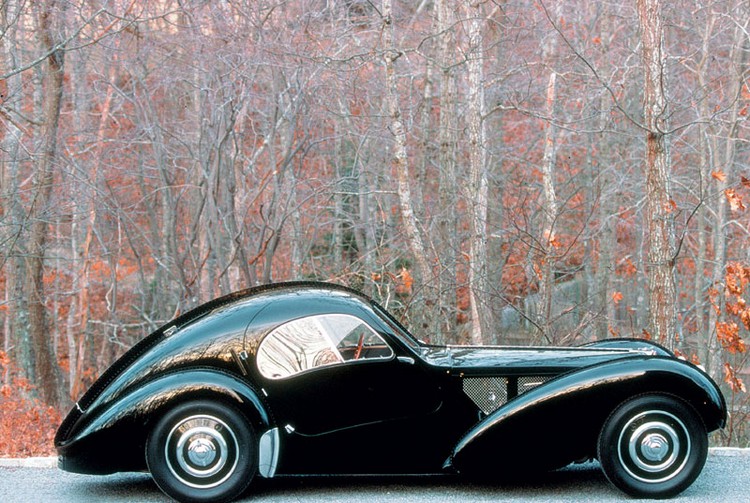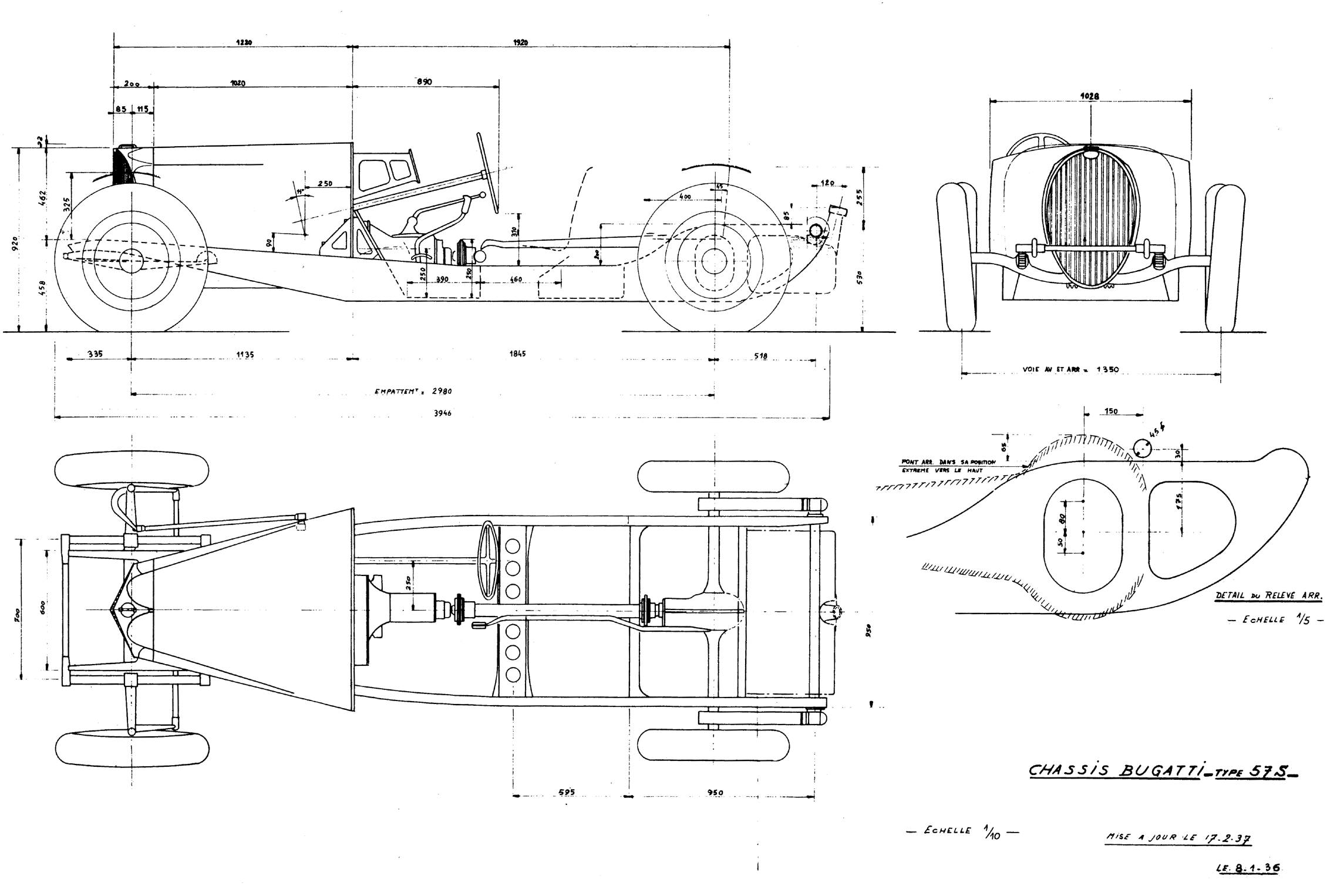Bugatti Type 57S - A low chassis deserving the most exquisite body designs
Jaap Horst
The Bugatti Type 57 was introduced in 1934, and was from 1935 onwards the only chassis type to be sold by Bugatti. With 3.3 meter wheelbase a reasonably big car, Bugatti introduced a smaller, lighter, faster version in 1936. The wheelbase was significantly reduced to 2.98 meter, and the whole chassis was lowered (The “S” stands for the French “Surbassé“) in fact it was so low, that the rear axle passed through holes in the chassis! The horseshoe shape of the radiator had been abandoned in favor of an oval, but V-shaped grille.

Bugatti Type 57S Atalante, a simlar bodyshape was also available for the larger standard Type 57. A very elegant car.
 Only 2 of the 43 produced “S” versions were delivered new with compressor, giving the very powerful type 57SC with 200 HP. However, many owners sent the car back to the factory to be equipped with one, and of course others received a supercharger more recently.
Only 2 of the 43 produced “S” versions were delivered new with compressor, giving the very powerful type 57SC with 200 HP. However, many owners sent the car back to the factory to be equipped with one, and of course others received a supercharger more recently.
The most beautiful bodywork was designed for the Type 57S and SC, of course the Atalante as shown here was a beautiful example, very elegant and refined. However, also other coachbuilders made bodies on the Type 57S chassis, like Vanden Plas from England, who made a beautiful roadster in 1938. This car was auctioned in Bonhams Amelia Island Auction, on March 10, 2016, and attained US$ 9.7 million.

1938 Bugatti Type 57S Vanden Plas, England.
 Compared with all these beautiful cars, there is one which is the most sensational and almost aggressive of bodies on the Type 57S chassis, the Atlantic. In 1935 Bugatti showed the coupé Aerolithe on a shortened but not lowered Type 57 chassis in the Paris Motor show. As the body was constructed of the novel material Electron, an alloy of magnesium and aluminium that could not be welded, the seams on the body and fenders were riveted. Jean Bugatti’s genius was to put the seams on the outside of the body.
Compared with all these beautiful cars, there is one which is the most sensational and almost aggressive of bodies on the Type 57S chassis, the Atlantic. In 1935 Bugatti showed the coupé Aerolithe on a shortened but not lowered Type 57 chassis in the Paris Motor show. As the body was constructed of the novel material Electron, an alloy of magnesium and aluminium that could not be welded, the seams on the body and fenders were riveted. Jean Bugatti’s genius was to put the seams on the outside of the body.

Ralph Lauren’s Bugatti Type 57SC Atlantic, showing the rounded tail and the famous ridge over the body and fenders.
 The production version of the body (only four built, of which one disappeared without a trace) was made of conventional aluminium retained the exterior seam, It was placed on the lowered Type 57S chassis, and renamed Atlantic in honor of the sculptor and pilot Jean Mermoz, who tried to cross the South-Atlantic in 1936 by plane and disappeared without a trace.
So popular is this type of body, that over 10 replica’s were built, many of them on original, lowered Bugatti chassis with Bugatti mechanicals.
The production version of the body (only four built, of which one disappeared without a trace) was made of conventional aluminium retained the exterior seam, It was placed on the lowered Type 57S chassis, and renamed Atlantic in honor of the sculptor and pilot Jean Mermoz, who tried to cross the South-Atlantic in 1936 by plane and disappeared without a trace.
So popular is this type of body, that over 10 replica’s were built, many of them on original, lowered Bugatti chassis with Bugatti mechanicals.


The Aerolithe, prototype for the Atlantic. Photo on the left the car at the Paris Motor show. On the right, the replica by the Guild of automotive restorers of Canada. The green metallic color should be original, metallic paints had been introduced only recently before the presentation of the Aerolithe.
Recently, two replica’s of the Aerolithe were also built on original Bugatti chassis, one in Germany, the other in Canada.
|








